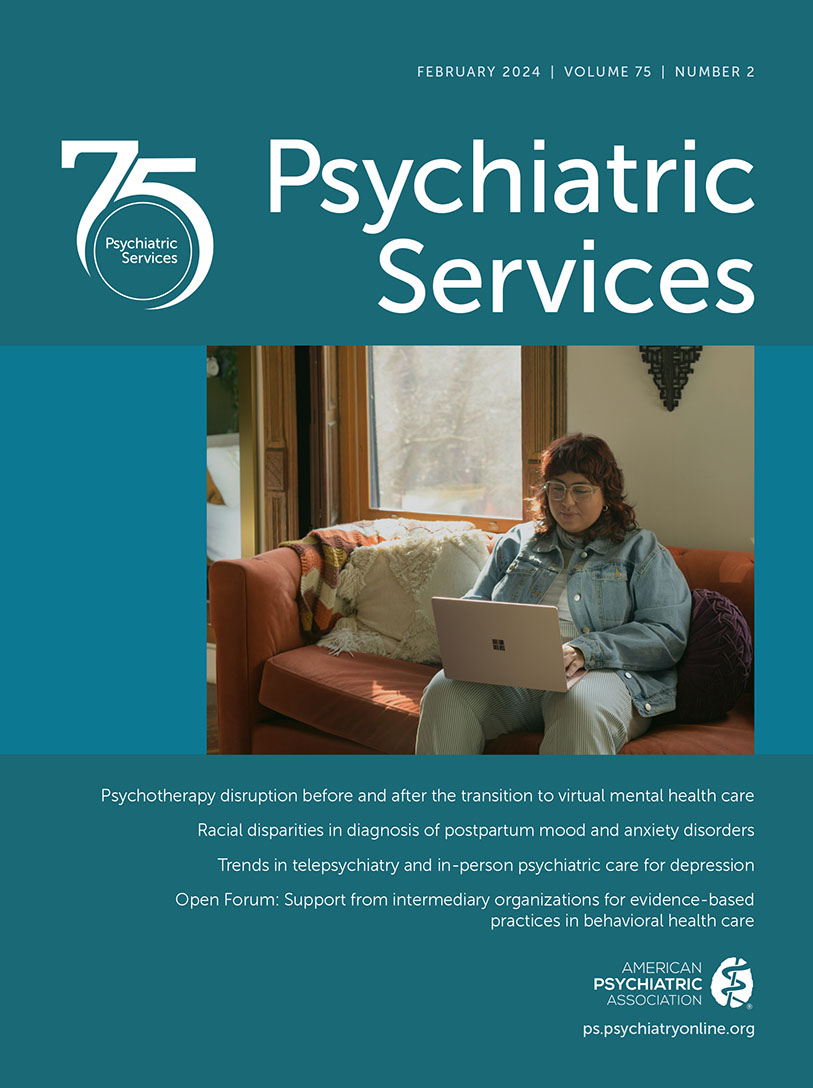Community- and Program-Level Predictors of Funding Streams Used by Coordinated Specialty Care Programs
Abstract
Objective:
Although coordinated specialty care (CSC) is an effective service model to address first-episode psychosis, CSC is not widely accessible in the United States, and funding for this service model often remains challenging. The authors examined whether community- or program-level factors predict the use of public and private funding streams in a national sample of 34 CSC programs in 22 U.S. states and territories.
Methods:
As part of a larger mixed-methods study, CSC program leaders completed a brief questionnaire regarding funding sources. Statistical modeling was used to examine program- and community-level predictors of the use of funding sources.
Results:
Most CSC programs (20 of 34, 59%) reported that Mental Health Block Grant (MHBG) set-aside funds accounted for more than half of their total funding, and 11 of these programs reported that these funds contributed to >75% of their funding. Programs ≤5 years old were more likely to rely on MHBG set-aside funds. Programs in Medicaid expansion states were more likely to rely on Medicaid funding than programs in nonexpansion states. Programs in higher-income service catchment areas used more state funds than did those in lower-income areas, and among programs in lower-income service catchment areas, those that were >4 years old were more likely than those ≤4 years old to rely on state funds other than Medicaid.
Conclusions:
CSC programs remain largely dependent on MHBG set-aside funding. Some programs have diversified their funding streams, most notably by including more Medicaid and other state funding. A more comprehensive funding approach is needed to reduce reliance on the MHBG set-aside funds.
Access content
To read the fulltext, please use one of the options below to sign in or purchase access.- Personal login
- Institutional Login
- Sign in via OpenAthens
- Register for access
-
Please login/register if you wish to pair your device and check access availability.
Not a subscriber?
PsychiatryOnline subscription options offer access to the DSM-5 library, books, journals, CME, and patient resources. This all-in-one virtual library provides psychiatrists and mental health professionals with key resources for diagnosis, treatment, research, and professional development.
Need more help? PsychiatryOnline Customer Service may be reached by emailing [email protected] or by calling 800-368-5777 (in the U.S.) or 703-907-7322 (outside the U.S.).



